Explore Fuji-Shi- Japan Travel, Asia
Fuji-shi, or Fuji City, is a vibrant gateway to Japan’s most iconic peak, Mount Fuji. Located in Shizuoka Prefecture, this coastal city blends scenic beauty with rich traditions. From its bustling streets to the peaceful banks of the Fuji River, every corner offers a postcard-worthy view of the mountain. Just an hour from Tokyo by train, Fuji-shi is ideal for travelers seeking authentic Japanese city life with nature close at hand.
Population: Approximately 245,000 in 2019.
Economy: Fuji-shi is a major hub in Shizuoka Prefecture’s manufacturing sector, known for its paper and pulp production. The city also benefits from the logistics and transport industries due to its location along the Tōkaidō corridor.. Fishing at Tagonoura Port, tea production in nearby plantations, and tourism linked to Mount Fuji further diversify the local economy.
Landmarks: Famous for Mount Fuji viewing points, Fujisan Hongu Sengen Taisha Shrine, and Tanuki Lake.
Japan
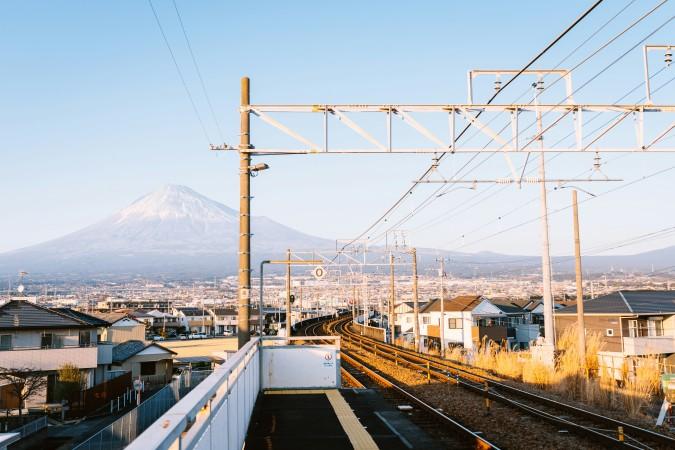
Overview of Fuji-Shi
History & Cultural Influence
Fuji-shi’s story stretches back to Japan’s Edo period, when it served as a key stop along the Tōkaidō trade route. Merchants and travelers passed through its ports, bringing goods, stories, and customs that shaped the city’s culture. Mount Fuji, a UNESCO World Heritage Site, has long been more than a backdrop. It inspires local art, poetry, and spiritual traditions. Seasonal festivals, from cherry blossom celebrations to autumn harvest events, still echo the rhythms of Japan’s past.
Interaction with the Locals
Fuji-shi’s charm lies not only in its landscapes but in its people. Locals welcome visitors with quiet warmth, often offering directions, a smile, or even an impromptu food recommendation. Travelers can join community workshops to learn washi paper making, participate in tea ceremonies, or try their hand at traditional crafts.
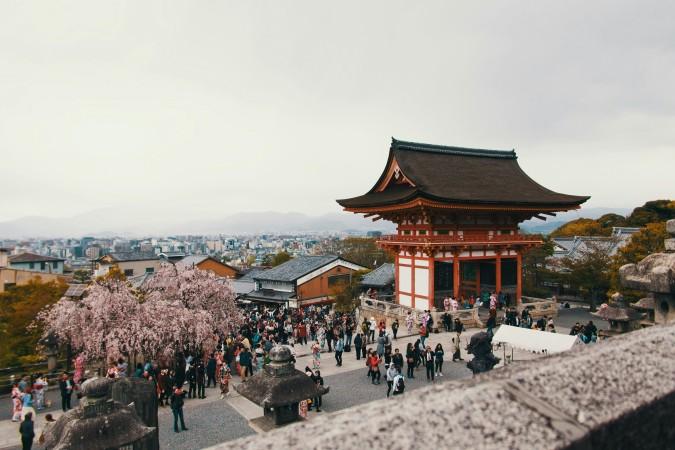
Top Attractions in Fuji-Shi
Mount Fuji Viewing Points
No visit to Fuji-shi is complete without gazing at Mount Fuji’s majestic silhouette. For an unobstructed panorama, head to Tagonoura Port at sunrise. On clear days, the mountain rises above Suruga Bay in a perfect postcard view. Another favorite is Mt. Fuji Children’s World, a family-friendly park with wide lawns, seasonal flowers, and breathtaking backdrops of the peak.
Fujisan Hongu Sengen Taisha Shrine
As one of the most important shrines in the region, Fujisan Hongu Sengen Taisha is both a cultural and spiritual landmark. Dedicated to the deity of Mount Fuji, it serves as a traditional starting point for pilgrims. Its serene pond, vermilion gates, and seasonal festivals make it a must-visit for travelers seeking a glimpse into Japan’s Shinto heritage.
Tanuki Lake
Just outside the city, Tanuki Lake is a photographer’s dream. Its mirror-like waters reflect Mount Fuji with stunning clarity, especially during autumn foliage or early morning mist. Cycling and walking paths circle the lake, offering a peaceful escape from urban life.
Paper Museum (Kami no Machi Museum)
Fuji-shi’s Paper Museum tells the story of its paper-making history. Visitors can try hands-on activities such as crafting traditional washi sheets to designing paper lanterns. The museum blends history with interactive exhibits, making it ideal for both adults and children.
Iwamoto Mountain Park
In spring, Iwamoto Mountain Park transforms into a sea of pink with thousands of cherry blossoms in full bloom. Walking trails lead to observation decks where the blossoms frame Mount Fuji in the distance. This park is also beautiful in autumn, when maple leaves paint the hillsides in red and gold.
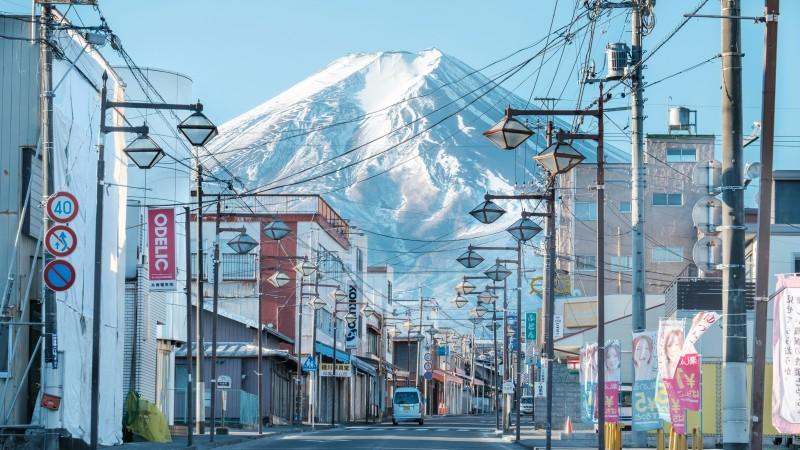
Must-Try Dishes in Fuji-Shi
- Shizuoka Oden: In Fuji-shi, Shizuoka Oden is a cultural comfort dish. Skewered fish cakes, tofu, and vegetables simmer in a rich, soy-based broth, turning almost black from hours of slow cooking. Locals top it with aonori seaweed and a touch of dark miso. The flavor is deep, slightly smoky, and best enjoyed with a cold beer in a casual shop.
- Sakura Shrimps: Harvested from Suruga Bay, sakura shrimp are a rare and treasured delicacy. Their pink hue and sweet, briny taste make them a seasonal highlight in spring and autumn. Try them raw in sushi, fried as kakiage tempura, or sprinkled over rice bowls.
- Fresh Wasabi: Shizuoka is a leading producer of fresh wasabi, and Fuji-shi uses it in inventive ways. Beyond the usual sushi pairing, you’ll find wasabi ice cream, wasabi-flavored crackers, and even wasabi beer. The fresh root delivers a clean, aromatic heat that fades quickly, making it perfect for adventurous palates.
- Shizuoka Green Tea: Nearby Makinohara tea plantations supply Fuji-shi with high-quality sencha. Served hot in winter or cold in summer, the tea has a grassy aroma and mild sweetness. Many cafés here offer tea-tasting flights so you can explore different grades and brewing styles.
- Kuro Hanpen: A specialty unique to Shizuoka, kuro hanpen is a dark, square fish cake made from sardine paste. It’s often grilled, topped with soy sauce and ginger, or served inside oden.
- Unagi (Freshwater Eel): Unagi kabayaki or grilled eel glazed with sweet soy sauce is a delicacy in Shizuoka Prefecture. In Fuji-shi, you can enjoy it freshly prepared at traditional eel houses, often served over steamed rice as unadon. The tender meat and caramelized glaze make it unforgettable.
- Sakura Mochi: For dessert, try sakura mochi, a pink rice cake wrapped in a salted cherry leaf. The combination of sweet bean paste and floral aroma captures the essence of spring in Fuji-shi. It’s especially popular during cherry blossom season.

Festivals & Local Celebrations
Fuji Matsuri
Held in summer, Fuji Matsuri transforms the city into a vibrant celebration of music, dance, and fireworks. Streets fill with food stalls selling takoyaki, yakisoba, and local specialties. The highlight is the evening fireworks show, where colorful bursts light up the silhouette of Mount Fuji.
Tagonoura Minato Festival
At Tagonoura Port, this festival celebrates the city’s maritime heritage and fishing industry. Visitors can taste freshly caught seafood from Suruga Bay, enjoy taiko drum performances, and watch fishing boat parades. It’s an excellent chance to experience Fuji-shi’s deep connection to the sea.
Fuji City Cherry Blossom Festival
In early April, Iwamoto Mountain Park becomes the heart of the hanami (flower viewing) season. Families and travelers gather under blooming sakura trees, often with picnic mats and bento boxes. Local vendors sell cherry blossom-themed sweets and tea, adding seasonal flavor to the view.
Fuji Shibazakura Festival
Although located just outside the city, the Fuji Shibazakura Festival is a must for spring visitors. Millions of pink moss phlox flowers bloom against Mount Fuji’s backdrop, creating a surreal carpet of color. Shuttle buses from Fuji-shi make it easy to reach this photogenic event.
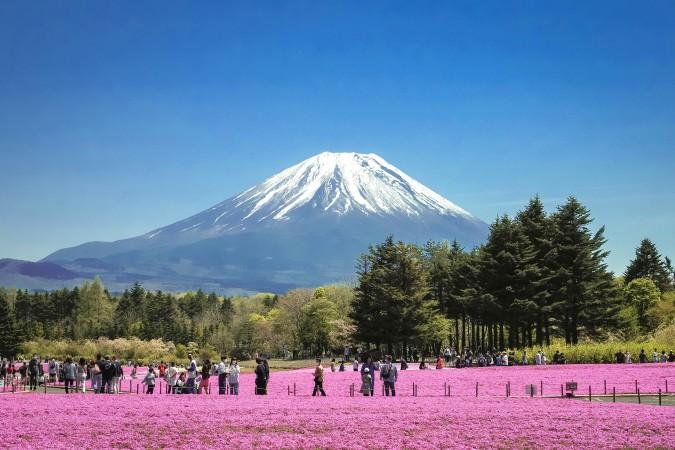
What to Do in Fuji-Shi
- Cycling Along the Fuji River: The Fuji River cycling route offers breathtaking views of Mount Fuji, passing through quiet riverside paths and small farming villages. Bicycle rentals are available near train stations, making it easy for travelers to enjoy a half-day ride.
- Hiking and Nature Walks: From gentle strolls at Iwamoto Mountain Park to more challenging treks in the nearby foothills, Fuji-shi is surrounded by nature trails. In spring and autumn, these routes come alive with blossoms or fiery foliage, perfect for photography.
- Tea Plantation Visits: A short trip from the city leads to Makinohara tea plantations, where visitors can join guided tours, pluck tea leaves, and sample fresh brews.
- Fishing at Tagonoura Port: Local fishing guides welcome visitors to try their luck in Suruga Bay. Depending on the season, you might catch mackerel, horse mackerel, or even small tuna. Some tours include grilling your catch on-site for a true sea-to-table meal.
- Cultural Workshops: Join washi paper-making classes, pottery sessions, or calligraphy workshops to bring home a handcrafted souvenir. These activities also provide a window into the city’s traditional artistry.
Shopping in Fuji-Shi
- Local Markets: Morning markets near Tagonoura Port brim with fresh seafood, vegetables, and seasonal specialties. These are perfect for tasting snacks or picking up ingredients for a picnic.
- Washi Paper Souvenirs: Fuji-shi’s paper-making heritage shines in its boutiques and craft shops. You’ll find delicate stationery, origami paper, and hand-printed cards that make thoughtful gifts.
- Mt. Fuji-Themed Goods: From tote bags to ceramic cups, many local stores sell items adorned with Mount Fuji designs. These souvenirs are lightweight, affordable, and easy to pack.
- Specialty Food Products: Don’t miss locally packaged Shizuoka green tea, jars of pickled vegetables, and dried sakura shrimp snacks. They’re popular with both Japanese and overseas visitors.
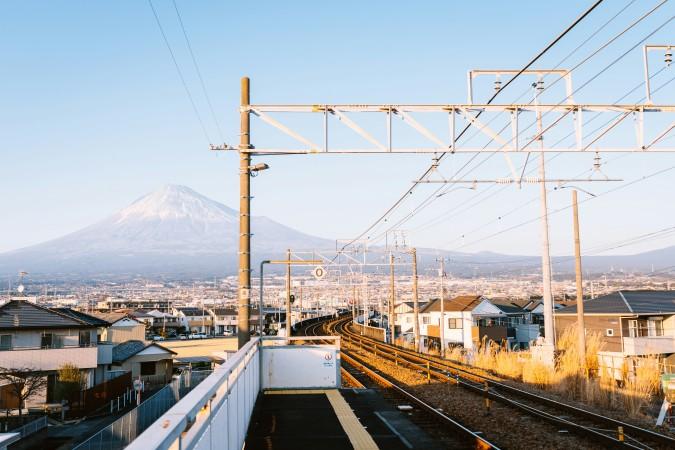
Weather in Fuji-Shi: Best Time to Visit
Spring in Fuji-Shi (March – May)
Spring in Fuji-shi is mild and colorful. Temperatures range from 10°C to 20°C, making it perfect for hanami at Iwamoto Mountain Park or cycling along the Fuji River. Clear skies often offer stunning views of Mount Fuji, especially in April when cherry blossoms frame the landscape.
Summer in Fuji-Shi (June – August)
Summer brings warmth and lively festivals. Temperatures climb to 25–32°C, with higher humidity. While June is the rainy season, July and August are great for hiking, cycling, and attending events like Fuji Matsuri. Evenings are cooler along the coast, offering relief from the heat.
Autumn in Fuji-Shi (September – November)
Autumn is one of the best times to visit. Crisp air and average temperatures of 12–22°C create perfect conditions for photography, tea plantation tours, and nature walks. Mount Fuji often appears crystal clear against the autumn sky, and foliage in late November paints the parks in red and gold.
Winter in Fuji-Shi (December – February)
Winter in Fuji-shi is cool but rarely extreme, with temperatures from 4°C to 12°C. This is the best season for snow-capped Mount Fuji photography. Sunny, dry days are common, making it great for outdoor sightseeing. Hot dishes like Shizuoka Oden taste even better in the cold air.
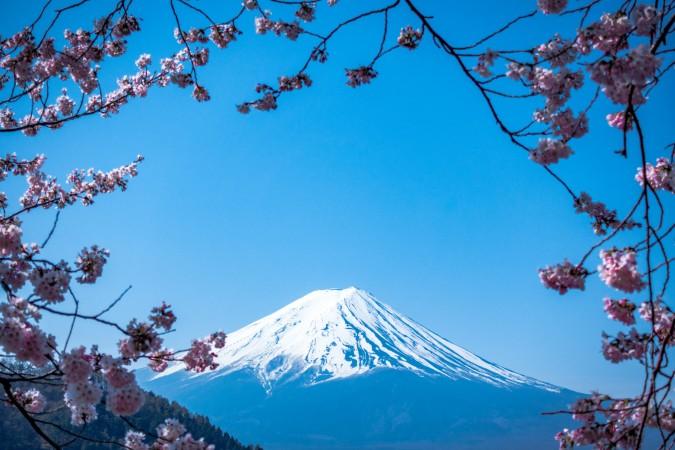
Essential Travel Information
Getting Around Fuji-Shi
- By Train: Fuji-shi is served by the JR Tokaido Main Line and JR Minobu Line, making it easy to reach nearby cities. For faster travel, the Shinkansen stops at Shin-Fuji Station, connecting to Tokyo in about an hour.
- By Bus: Local buses connect major attractions, shopping districts, and residential areas. Tourist information centers often provide English bus maps and day-pass options.
- By Bicycle: Bicycle rentals are available near Fuji Station and Shin-Fuji Station, perfect for exploring Fuji River trails, local neighborhoods, and coastal routes.
- By Car: Car rentals offer flexibility for visiting lakes, tea plantations, and nearby hiking spots. Roads are well-maintained, but parking in city centers may be limited.
- On Foot: Central Fuji-shi is pedestrian-friendly, with attractions, restaurants, and shops located within walking distance of train stations.
ATM & Banking Services
Fuji-shi has ATMs in convenience stores such as 7-Eleven, Lawson, and FamilyMart, many of which accept international cards (Visa, Mastercard, Plus, and Cirrus networks). Major Japanese banks, including Shizuoka Bank and Japan Post Bank, have branches across the city. They provide currency exchange, bank transfers, and account services, though English support may be limited.
Where to Stay in Fuji-Shi
- Ryokan (Traditional Inns): Stay in a ryokan for a cultural experience, complete with tatami mat rooms, futon bedding, and traditional meals. Some offer onsen baths with Mount Fuji views, perfect after a day of sightseeing.
- Guesthouses & Hostels: Budget-friendly guesthouses and hostels are popular among backpackers and cyclists. They often have communal kitchens and lounges, encouraging interaction with fellow travelers.
- Vacation Rentals: For longer stays or group travel, vacation rentals offer privacy and the comfort of a home-like environment. Some have rooftop terraces for unobstructed views of Mount Fuji.
- Resort Hotels: Just outside the city, resort hotels near lakes and hot spring towns offer spa facilities, open-air baths, and nature-focused retreats.
Articles for you

Explore Yala National Park - Sri Lanka Travel, Asia
Tucked away in Sri Lanka’s southeastern corner, Yala National Park is where wild nature meets deep tradition. Known worldwide for its leopard population, the park is also home to elephants, sloth bears, crocodiles, and hundreds of bird species. Beyond wildlife, Yala opens doors to a cultural landscape dotted with ancient temples, Buddhist ruins, and coastal villages. For travelers seeking more than just a safari, Yala offers a chance to explore eco-tourism, local communities, and sacred heritage sites.
Population: The Yala National Park area doesn’t have a human population.
Economy: The economy around Yala National Park thrives on a blend of eco-tourism, agriculture, and local services. Safari tours, eco-lodges, and cultural experiences drive steady income for nearby towns like Tissamaharama and Kataragama, supporting thousands of families.
Landmarks: Famous for Block I of Yala and wildlife encounters, including elephants, sloth bears, crocodiles, and exotic bird species.

Explore Galle - Sri Lanka Travel, Asia
Nestled on Sri Lanka’s southern coastline, Galle is a vibrant city where history meets the sea. Its cobbled streets, colonial architecture, and serene beaches make it a must-visit destination for travelers seeking a blend of culture, adventure, and relaxation. A UNESCO World Heritage site, Galle captivates visitors with its Dutch Fort, bustling markets, and friendly locals. Whether you’re exploring the ramparts at sunset or savoring fresh seafood by the shore, Galle promises an unforgettable journey into Sri Lanka’s heritage.
Population: Approximately 113,000 in 2023.
Economy: Galle’s economy thrives on tourism, trade, and fisheries. The city’s historic fort, colonial architecture, and coastal charm draw thousands of international visitors each year, making tourism its main economic driver. Fishing remains vital for local livelihoods, supplying fresh seafood across the region.
Landmarks: Famous for the Galle Fort, Dutch Reformed Church & Maritime Museum, and Unawatuna Beach.

Explore Bentota - Sri Lanka Travel, Asia
Nestled along Sri Lanka’s southwestern coast, Bentota is a tropical paradise that blends golden beaches, vibrant culture, and thrilling adventures. Famous for its calm waters, luxury resorts, and scenic river estuary, Bentota has become a top destination for travelers seeking both relaxation and authentic experiences. From serene beach walks at sunrise to adrenaline-pumping water sports, this coastal town offers a perfect balance of leisure and exploration. With its proximity to Colombo and Galle, Bentota is easy to reach, making it an ideal stop for both short escapes and extended holidays.
Population: Approximately 37,000 in 2023.
Economy: Bentota’s economy thrives mainly on tourism, which drives local businesses such as hotels, restaurants, and wellness retreats. The town also benefits from fishing, coconut cultivation, and handicrafts like wood carving and batik textiles. Many residents rely on the growing demand for water sports and Ayurvedic treatments, making tourism the backbone of both income and employment in the area.
Landmarks: Famous for Bentota Beach, Bentota River Safari, and Kande Vihara Temple.

Explore Mirissa - Sri Lanka Travel, Asia
Mirissa is a charming coastal town on Sri Lanka’s southern shoreline. Known for its golden beaches, turquoise waters, and vibrant marine life, it has become a must-visit stop for travelers exploring the island. Many come for whale watching, surfing, and sunset views at Coconut Tree Hill, but Mirissa offers much more than postcard beauty. The fishing boats you see anchored by the bay carry generations of stories. Local traditions, delicious cuisine, and a laid-back rhythm of life shape every visitor’s experience.
Population: Approximately 4,700 in 2023.
Economy: Mirissa’s economy is largely shaped by its coastal location. Fishing has long been the backbone of local livelihoods, with generations relying on the Indian Ocean for income. In recent decades, tourism has become the main driver of growth, thanks to whale watching, surfing, and beachside hospitality.
Landmarks: Famous for Mirissa Beach, Coconut Tree Hill, and Parrot Rock Bridge.

Explore Nuwara Eliya - Sri Lanka Travel, Asia
Tucked away in the Central Highlands of Sri Lanka, Nuwara Eliya is often called “Little England”. With its rolling tea plantations, cool misty mornings, and colonial charm, this mountain town feels like a step into another world. Travelers come here to breathe fresh air, walk through flower gardens, sip the finest Ceylon Tea, and enjoy a pace of life far from the island’s busy cities. Whether you’re drawn by scenic landscapes, heritage architecture, or the warmth of its people, Nuwara Eliya is a destination that blends nature, culture, and history in perfect harmony.
Population: Approximately 781,000 in 2023.
Economy: Nuwara Eliya’s economy thrives mainly on tea production, as it sits in the heart of Sri Lanka’s central highlands, famous worldwide for Ceylon Tea. The city also benefits from a growing tourism industry, attracting visitors with its colonial charm, cool climate, and scenic landscapes.
Landmarks: Famous for Gregory Lake, Hakgala Botanical Garden, and Victoria Park.

Explore Sukau - Malaysia Travel, Asia
Nestled on the banks of the Kinabatangan River in Sabah, Malaysian Borneo, Sukau is a destination where wildlife, culture, and conservation come together. Known as one of Asia’s top spots for river safaris and eco-tourism, this quiet village offers a front-row seat to encounters with Bornean orangutans, pygmy elephants, proboscis monkeys, and exotic birdlife.
Population: Approximately 1,400 in 2019.
Economy: Sukau’s economy is shaped by its riverine location and natural resources. Traditionally, the Orang Sungai community relied on fishing, small-scale farming, and forest gathering for their livelihood. Today, the village has shifted toward eco-tourism, with river cruises, jungle trekking, and homestays providing income.
Landmarks: Famous for the Kinabatangan River cruises, Gomantong Caves, and Ox-bow lakes and wetlands.
